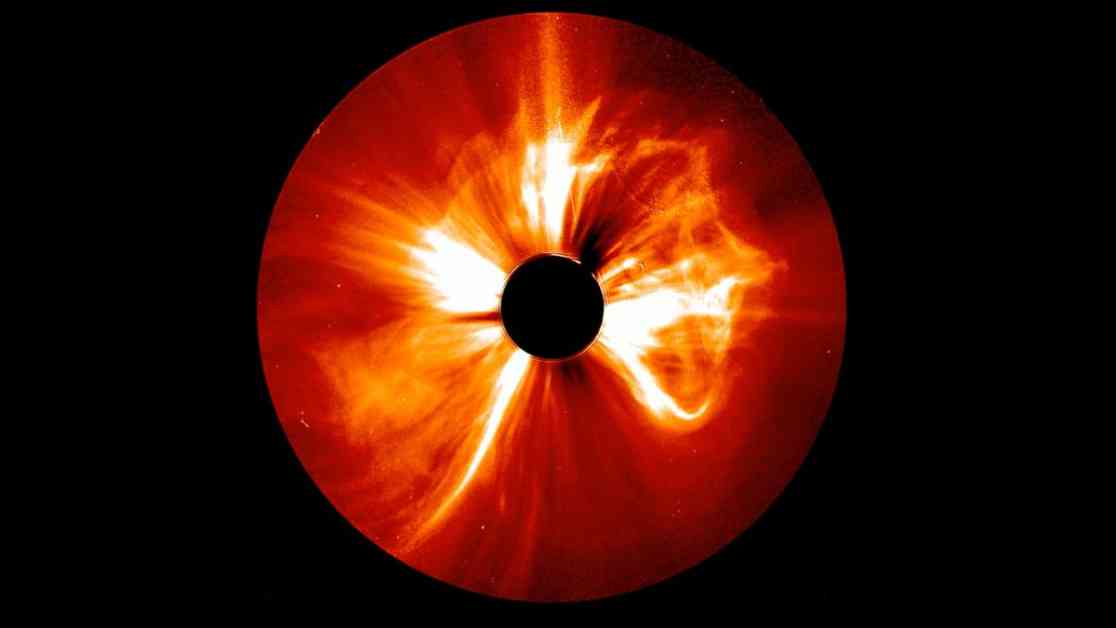On July 23, Europe’s Solar Orbiter spacecraft observed a powerful X14 class solar flare erupting from the far side of the sun. While this flare was not the strongest ever recorded (the record is held by an X45 flare in 2003), flares of this magnitude can lead to prolonged radiation storms and even global blackouts if directed towards Earth. X-class flares are the most intense on the classification scale, with energy output ten times greater than M-class flares.
According to Samuel Krucker, the principal investigator for the Spectrometer and Telescope for Imaging X-rays (STIX) on SolO, this was the largest flare detected so far. Other significant flares from the back side of the sun include an X12 on May 20, 2024, and an X10 on July 17, 2023. On the Earth-facing side of the sun, the most powerful flare in the current cycle occurred on May 14, 2024, measuring X8.9.
Accompanying the flare was a massive coronal mass ejection (CME) detected by NASA’s Solar and Heliospheric Observatory (SOHO). CMEs are bursts of plasma and magnetic field that erupt from the sun’s atmosphere. Although the plasma blast from the X-class flare on July 23 was not directed towards Earth, had it been, it could have resulted in a significant solar storm.
If the CME had impacted Earth, it could have caused impressive auroras but also posed a threat of major technological disruptions and electrical blackouts, similar to the event that occurred in Quebec in 1989. It’s important to note that the sun is constantly rotating, so this region of activity will come back into view in the next week and a half.
Keeping an eye on space news is crucial for understanding events like solar flares and CMEs. Stay informed about rocket launches, skywatching events, and more by joining space forums and engaging with the latest updates. If you have any news tips, corrections, or comments, feel free to reach out to the community at community@space.com.
Meredith, a regional Murrow award-winning Certified Broadcast Meteorologist and science/space correspondent, has been actively involved in reporting on space-related topics. Her expertise and dedication to meteorology have earned her recognition and awards over the years, highlighting her significant contributions to the field.












